1860-69
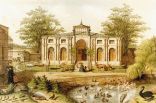
22nd July 1860
Zoologischer Garten Köln
(Köln (Cologne), North Rhine-Westphalia, Germany) Founding of the stock corporation Zoological Garden Cologne on the initiative of the Cologne high school teacher Dr. Casper Garthe. Following his recommendation, the physician Dr. Heinrich Bodinus was appointed the zoo's first director. Within 10 months, 40 animal enclosures were built from scratch.
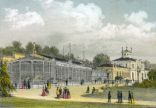
9th May 1861
Zoo Dresden
(Dresden, Saxony, Germany) n 1855 the association og poultry was started. It opened an exhibition 1859 with poultry, monkeys and a kamel. Due to this exhibition a stock foundation was founded, with the help of the King of Saxony. The king gave some land in the royal garden "Grosser Garten". 1860 the Garden was planned by architect Peter Joseph Lenné (who also made Berlin Zoo) and the buildings by Carl Adolph Canzler. Among other was a monkey house, a buffalo house and some half-timbered houses for hoofstock. On 9 May 1861 the zoo opened and the royal family visited 6 days later.
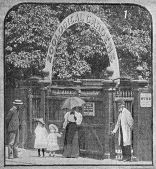
6th October 1862
Melbourne Zoo
(Parkville, Australia) In October 1857 the Zoological Society of Victoria was formed with the aim of introducing animals and plants from overseas. Its first collections of animals were housed in Richmond Paddock. In 1861 the organisation changed its name to the "Acclimatisation Society of Victoria". On 6 October 1862, the organisation opened a new Melbourne Zoo in Royal Park on 55-acre (22 ha) of land donated by the City of Melbourne. Melbourne Zoo was modelled on London Zoo.

1863
Sakkarbaug Zoological Gardens
(Junagadh, India) The zoo was established in 1863, by the then Nawab of Junagadh, Mohabatkhanji Babi-II. The place of the zoo was named as Sakkar Baug (fresh water well), because it was a private garden of the Nawab, having a step well with sweet potable water. Initially, the zoo had a personal collection of animals of Nawab, which included Asiatic Lions, African Lions, Tigers, Cheetahs, Leopards etc. These animals were taken out as a procession in the town of Junagadh on some auspicious days like Eid for the purpose of display.
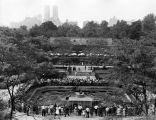
1864
Central Park Zoo
(New York, New York, USA) Animals have been exhibited at Central Park from nearly the very beginning of its history, starting with a bear cub left in the custody of a park messenger boy, Philip Holmes, shortly after construction of the park began in the late 1850s. Holmes took care of the bear, and before long a temporary collection of animals grew in and around the park's headquarters at the Arsenal. Central Park's original plan designed by Frederick Law Olmsted and Calvert Vaux excluded a zoo, but park commissioners responded to the ad hoc housing of animals by seeking a location for a “menagerie” that would not compromise the park's pastoral landscape. State legislation in 1861 authorized that a “portion of [Central Park], not exceeding sixty acres [be set aside] for the establishment of a zoological garden . . .” Vaux prepared a plan for Manhattan Square, today the site of the American Museum of Natural History; Olmsted suggested moving the menagerie to the park's northwest portion and placing paddocks for grazing animals dispersed around the park; the commissioners authorized, and then halted construction of a new menagerie at the north meadow. After a dozen proposals, during the 1860s the animals took up permanent residence behind the Arsenal, as if by squatter's rights. Victorian-styled structures sprouted up on the grounds under the direction of William Conklin, the Menagerie's director from the 1860s through the 1880s. The Menagerie was also the scene of rare births in captivity, such as a South American peccary born in 1866.
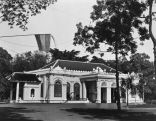
1864
Ragunan Zoo
(Jakarta, Indonesia) The zoo was established in 1864 by a Dutch East Indies flora and fauna lovers organization, the Vereneging Planten en Dierentuin of Batavia. Raden Saleh, a prominent Indonesian painter in the 19th century, donated about 10 hectares (25 acres) of his land for the establishment of Batavia’s first zoo in the Cikini area of Central Jakarta.
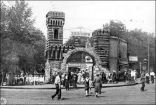
31st January 1864
Moscow Zoo
(Moscow Zoo, Central Federal District, Russia) The Moscow Zoo was organized by the Imperial Russian Society for the Acclimatization of Animals and Plants. The beginning of its existence is associated with the remarkable names of professors of Moscow University Karl Frantsevich Roullier, Anatoly Petrovich Bogdanov and Sergey Alekseevich Usov. For the creation of the zoo, the majority of votes of the members of the Acclimatization Society chose the site of the Presnensky Ponds, since it was at an accessible distance for all Muscovites, including the poor. y the opening of the zoo, it contained 134 specimens of domestic animals, 153 specimens of wild animals and birds, and 7 specimens of reptiles. The Russian fauna was best represented: bears, wolves, foxes, badgers, ferrets, martens, hares, squirrels, hedgehogs, deer, falcons, hawks, owls, bustards, cranes, herons, ducks. The creators of the garden wanted to show the audience first of all our native nature. There were also exotic animals on display — 2 lions, a jaguar, 2 tigers, a leopard, a rhinoceros, an alligator.

23rd March 1865
Saigon Zoo & Botanical Garden
(Ho Chi Minh City, Vietnam) Begun as research institute for the flora of French Indochina it soon as extended with an area for Fauna. It's today among the cities oldet institutions
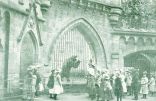
4th May 1865
Zoo Hannover
(Zoo Hannover, Lower Saxony, Germany) It was established in 1865 with private money on the idea of Dr. Hermann Schläger. To cover expenses, a stock company was founded. Without any experience in the keeping of wild animals, the company faced significant difficulties and, as a result, losses. It was often visited by local residents.

10th July 1865
Wroclaw Zoo
(Wroclaw, Poland) On the initiative of the Mayor of Wrocław, Dr. Julius Elwanger in 1863, the organizing committee for the construction of the zoo began work. The city authorities provided land for the designed garden. The zoo was designed by Karl Lüdecke. The garden was created in the vicinity of the horse racing track, in the remote and uninhabited area of the Szczytnicki Park , which could be reached from the city by omnibuses and Oder ships. During construction, in 1864, Dr. Franz Schlegel, a naturalist and physician, became the director. After two years of construction, on July 10, 1865, the garden was opened. 189 animals were exhibited at that time, including fallow deer, llamas, bears, roe deer, ostriches, camels, wolves, and one zebra; a large part (165 specimens) were gifts from the inhabitants of Wrocław and the surrounding area. There were also no permanent exhibition pavilions or paddocks at that time, most of the infrastructure was sheds and stables , according to Karol Łukaszewicz , the Polish post-war director of the Garden, "lions, tigers and leopards lived temporarily in a circus car" .
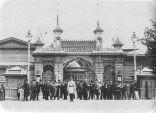
14th August 1865
Saint Petersburg Zoo
(Saint Petersburg Zoo, Northwestern Federal District, Russia) Initially, it was a private menagerie. It was opened and maintained at their own expense by Julius Gebhardt, a Dutchman of Prussian nationality, and his wife Sophia.

9th September 1865
Zoologischer Garten Karlsruhe
(Karlsruhe Zoo, Baden-Würtemberg, Germany) As early as 1861, there were first efforts to found a zoo in the Baden residence city of Karlsruhe. The initiators were the members of the newly founded association for poultry breeding. The proposal to set up a poultry park and supplement it with additional show enclosures for mammals was taken up and pursued in 1864. The Grand Duke, Friedrich I of Baden complied with a request for funding and had the southern part of the Sallenwäldchen provided together with Lake Ludwig for an annual rent of three guilders for the construction of a zoo. The necessary capital for the establishment would be raised through debt securities. The owners of these bonds formed the Tiergartengesellschaft, which was to operate the newly founded Tiergarten together with the poultry breeding association. The construction of the first plants took only a few months. In addition to funds, the Grand Duke also provided some animals from his collection. However, the planned financing ceiling of 50,000 guilders could not be raised until the opening. Only shares had been issued for a total of 25,000 guilders. The financing gap inhibited the expansion of the zoo.
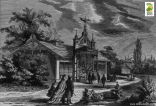
9th August 1866
Budapest Zoo
(Budapest, Hungary) The zoo was an initiation of a group of patriots among others geologist József Szabó, Ágoston Kubinyi, the Director of the National Museum, József Gerenday, the Director of the Botanical Garden of Budapest, and János Xántus, a zoologist, ethnographer, and the first director of the zoo. At that time, the zoo displayed mainly Hungarian species and some rare species of monkeys, parrots, camels, and kangaroos, among others. Franz Joseph and Queen Elizabeth donated a giraffe and other animals to the zoo.
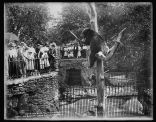
1868
Lincoln Park Zoo
(Chicago Zoo, Illinois, USA) The zoo was founded in 1868, when the Lincoln Park Commissioners were given a gift of two pairs of swans by Central Park's Board of Commissioners in New York City.

1st September 1868
Mulhouse Zoo
(Mulhouse, Grand Est, France) The Zoological Garden was founded on the initiative of a group of philanthropic industrialists from Mulhouse. On the day of the inauguration, 6000 people came, despite the heat, to discover the park and enjoy the day's entertainment: brass band, choir, torchlight retreat and fireworks. The zoo was then intended to be a "people's park", in the words of Charles Thierry-Mieg fils, who initiated the project: a place where workers could "combine business with pleasure, education with relaxation, the development of intelligence with the health of the body". For 10 cents, visitors can go for a walk, admire animals, listen to concerts, do gymnastics, in a pleasant setting.
woaqzo@yahoo.com